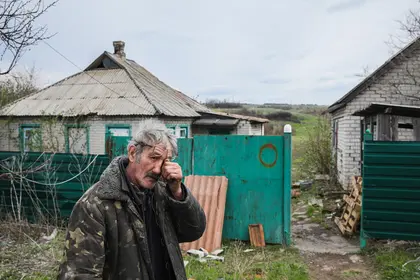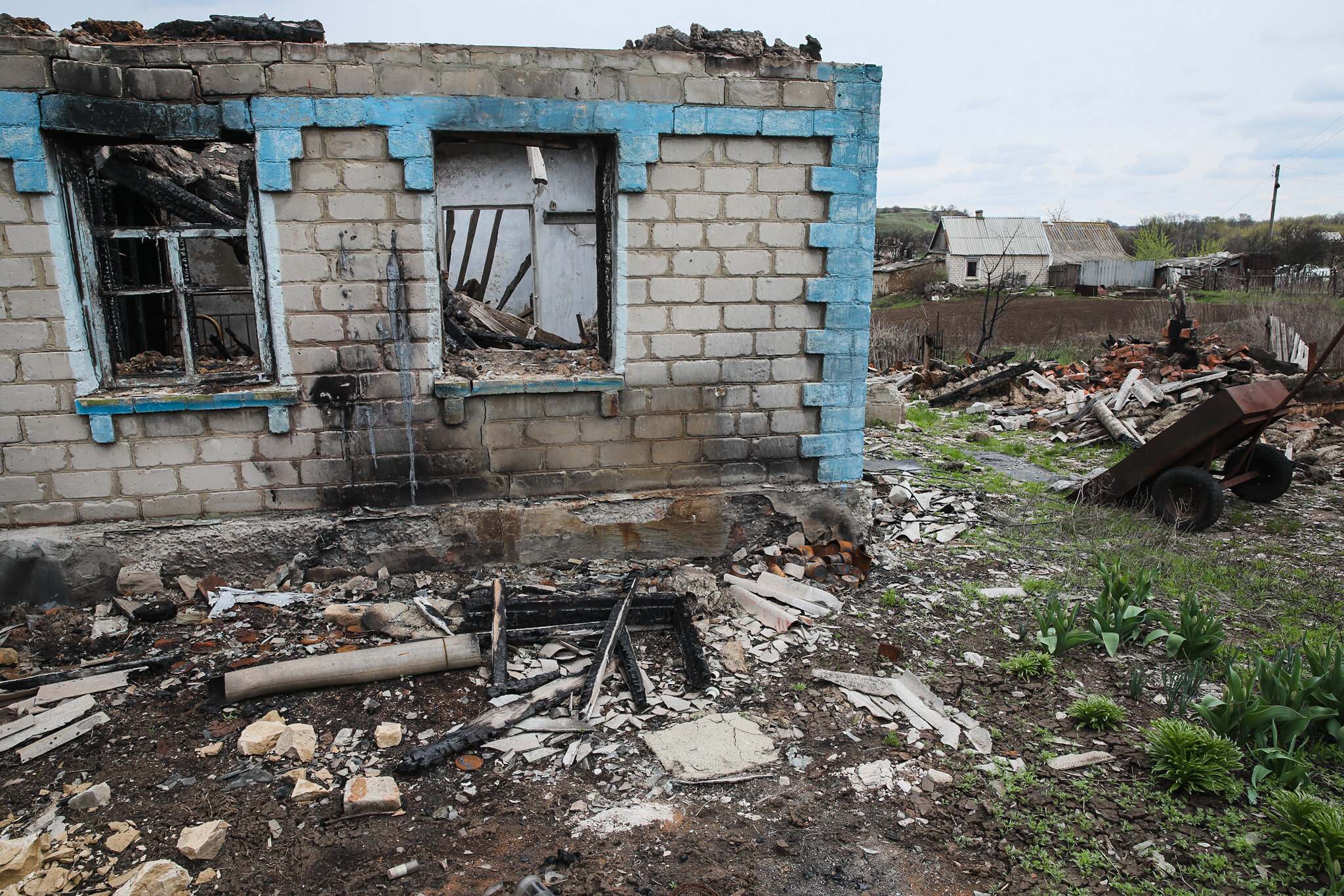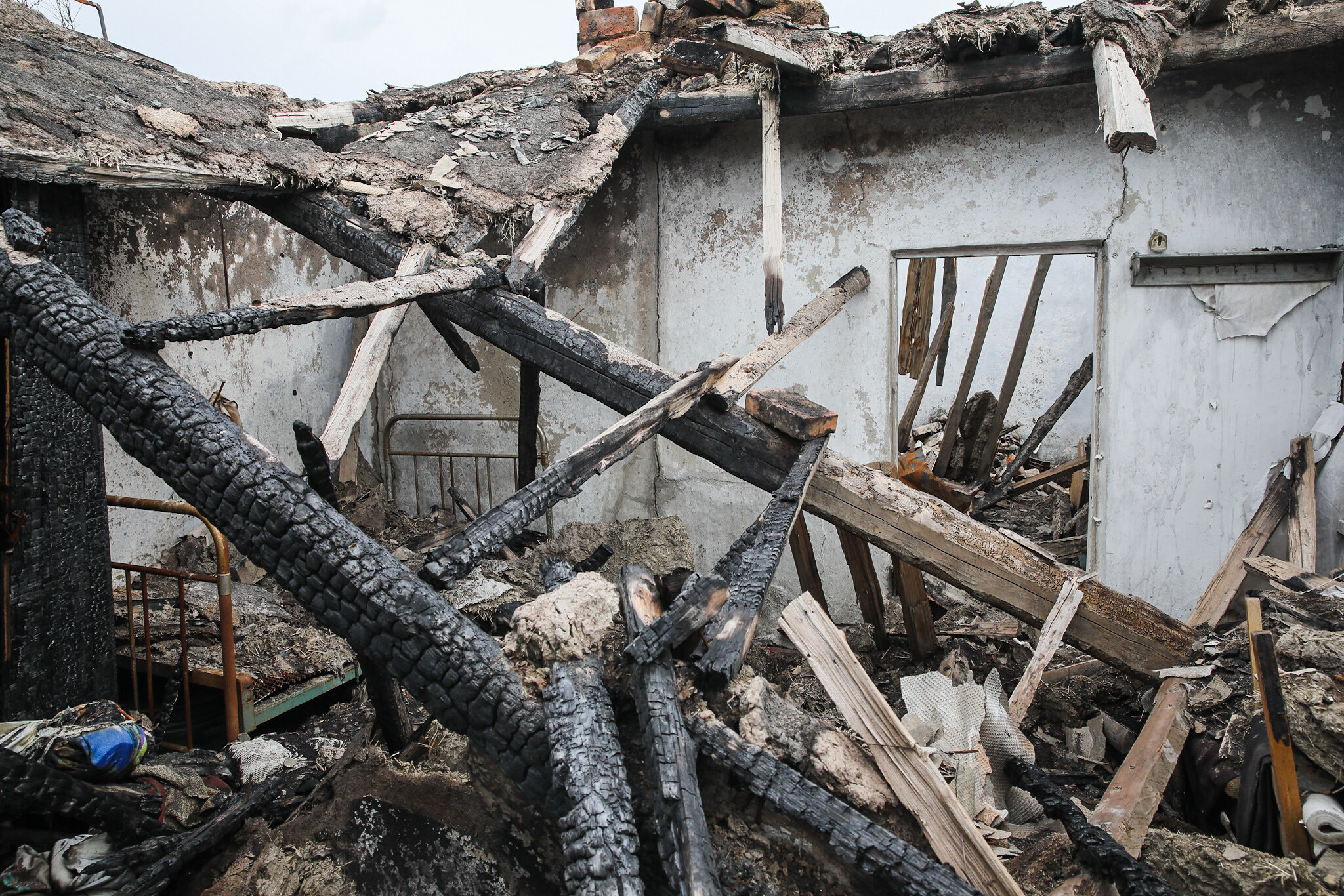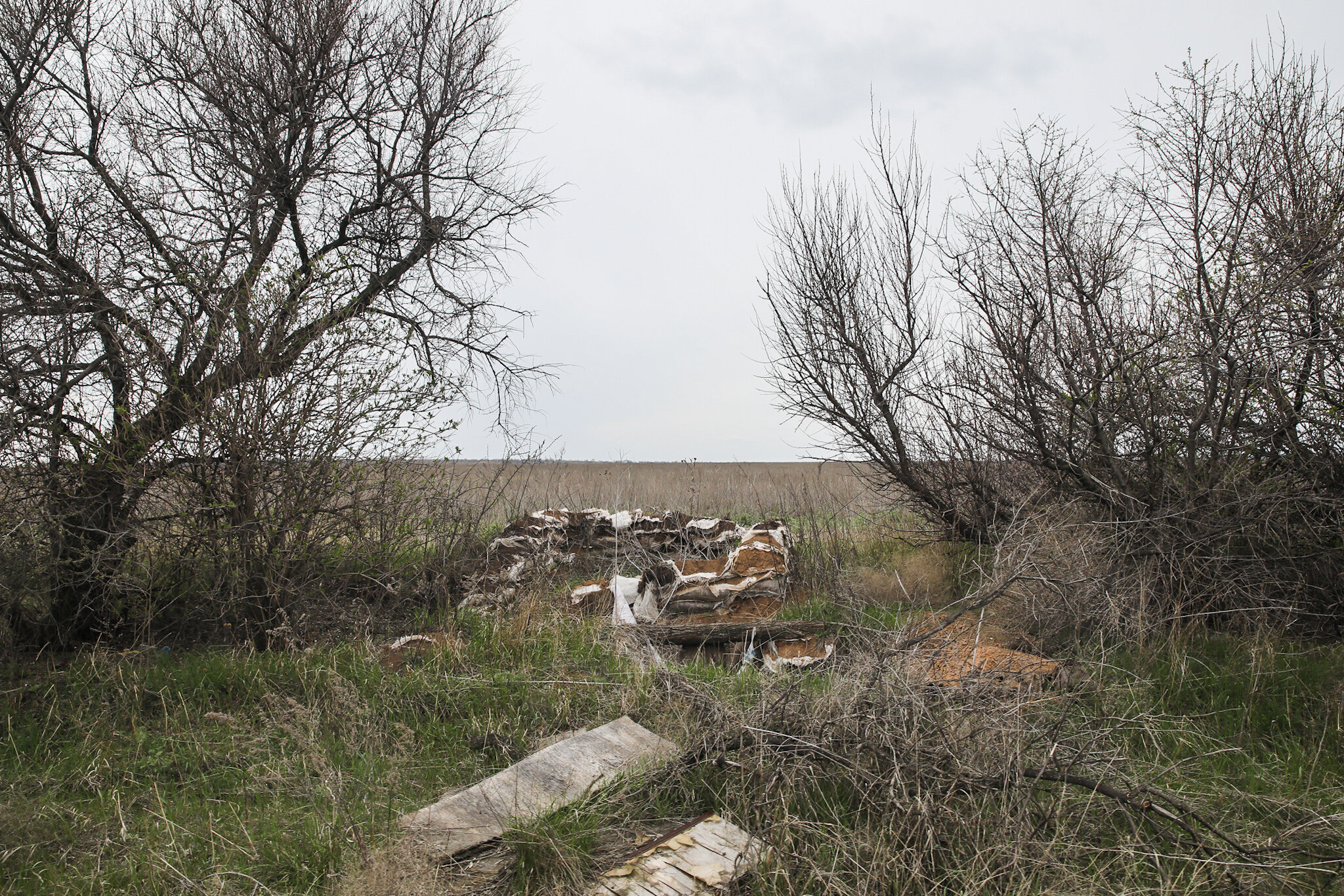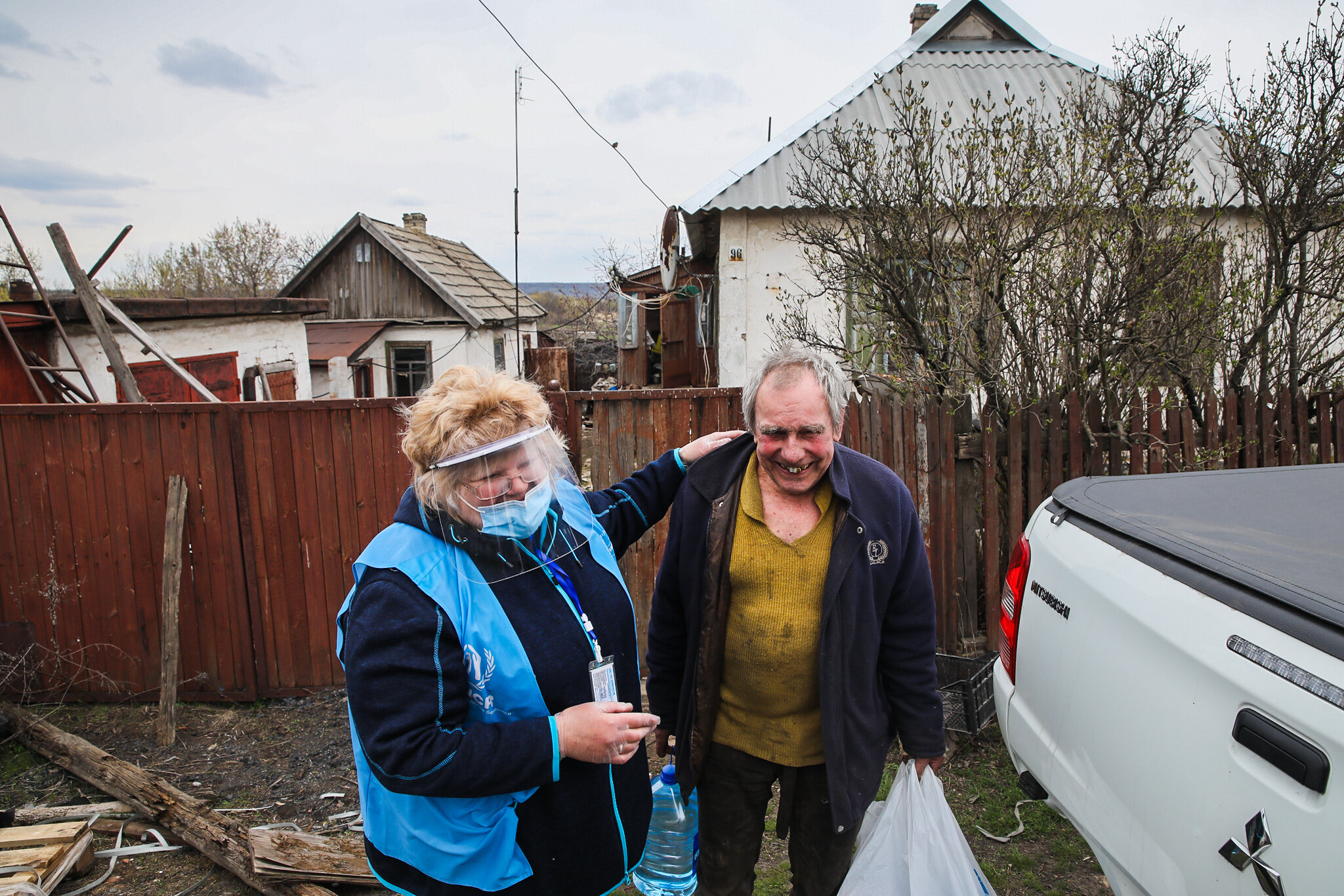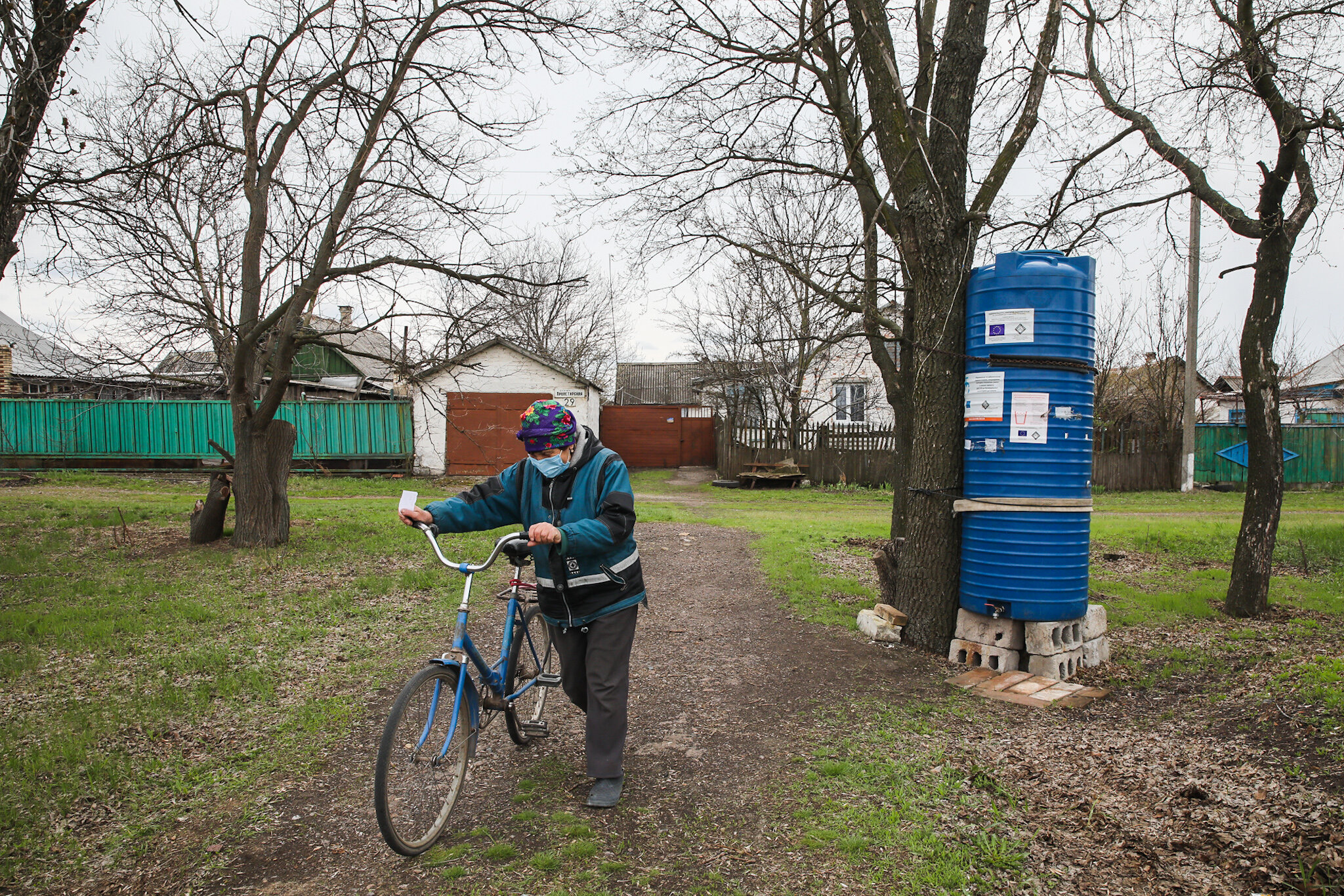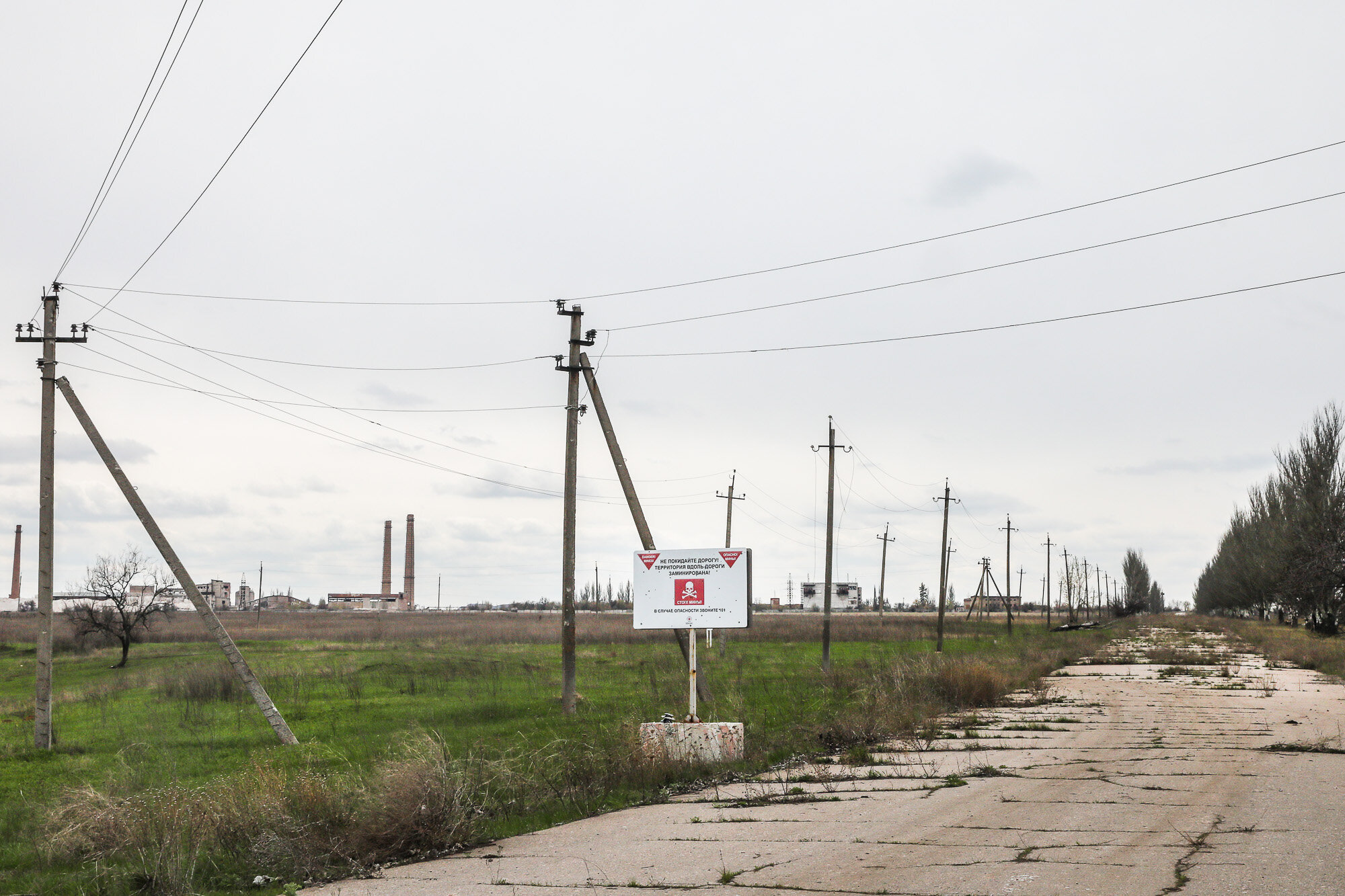TRAVNEVE and HLADOSOVE, Ukraine — Oleksandr and Kateryna Osiyaev, both in their 70s, were just another elderly couple trying to survive the war in Donbas.
They held on in their little old house in Travneve, a small Ukrainian-controlled village near the Russian-occupied city of Horlivka, 600 kilometers east of Kyiv.
JOIN US ON TELEGRAM
Follow our coverage of the war on the @Kyivpost_official.
Living with a war in their backyard was hard. Thankfully, armed clashes between the Ukrainian army and Russian-led militants that started in 2014 thinned out over the years.
But recently, new trouble came to the war-weary village.
In late March, Kateryna suddenly fell ill. Her neighbors did not know what to do — ambulances don’t come to Travneve, which is a 10-minute walk away from occupied territory. The villagers did all they could to bring the old woman to the nearest clinic but she did not survive for more than a few days.
One after another, the people of Travneve started developing a severe cough, muscle pain, shortness of breath, and high fever. From medical leaflets left by international organizations, they realized it was COVID-19.
After sweeping through the world for over a year, the coronavirus pandemic has finally made its way to this remote place at the edge of the war. In a matter of days, the disease hit more than a quarter of the local population and claimed two lives.
Now, together with the nearby village of Hladosove, this community of nearly 100 people is one of the worst zones of infection in the region. As of late April, it had 30 active COVID-19 cases.
The war has cut these and many other villages off from emergency medical care and government support. In their isolation, the people of Travneve and Hladosove have almost no one to depend on except each other.
Road of life
Getting to Travneve requires a decent crossover vehicle.
The dirt trail runs south through lonely fields and wood lines, briefly interrupted by rare hamlets. The closer it gets to the front line, the less life there is until there’s nothing but a dull wasteland. Mud and potholes ensnare vehicles. The path is flanked by dozens of signs painted with red skulls and the words “Halt! Landmines!”
This is the only way into town. Locals call it “the road of life,” even though it can kill them.
In fact, this trail does not officially exist. Only a couple of years ago, Donetsk Oblast authorities decided to create a path through the wild fields contaminated by unexploded munitions.
The village of Travneve consists of just one lane of simple single-story houses. Some gates are marked with a sign that the house is inhabited.
The village has no general store, access to public transport, healthcare, or phone connection.
This desolation is due to the fact that Travneve is part of the Horlivka municipality and, before the war, relied on the city’s amenities. Now the city is in the hands of Russia-backed militants. The pre-war roads linking the village with the Horlivka suburbs are blocked by the front line and landmine belts.
“The (central) lane is empty,” points out Inna Chizh, a local woman.
“In a more ordinary time, we all try to get out in the street, see each other, have an active social life. But now, everyone is staying indoors all the time. People are afraid. They hope to wait out the disaster.”
Chizh is the town’s only social worker, supported by the United Nations-related charity Proliska. She’s in her 40s and is considered part of “the youth” in the village where almost everyone is at least 70-years-old — the age group most vulnerable to COVID-19.
The Donetsk Oblast has reported over 84,000 COVID-19 cases, including 1,900 deaths, since the pandemic outbreak in early 2020. This doesn’t include the territories occupied by Russian-led militants.
Until recently, the disease had spared the remote isolated towns. Many believed that the global pandemic would not come for them.
In late March, one year after the pandemic hit Ukraine, COVID-19 finally came to Travneve and Hladosove. After a routine community meeting, over 20 people fell sick within just three days.
Apart from usual COVID-19 symptoms, many couldn’t walk due to severe leg pain and faintness. Others suffered renal impairment. Community life became paralyzed in an instant, which was disastrous for people who could not rely on ambulance services or even phone calls.
Those who had relatives in the rear managed to hire vehicles and evacuate the sickest people. But local doctors fighting the third and most severe wave of the disease were being forced to choose which patients to save.
Two people died. The virus didn’t stop there.
Painful solitude
On April 18, the nearest hospital in the town of Svitlodarsk, 10 kilometers to the east, saved the life of an 80-year-old woman from Travneve, having given her its last reserve bed.
Another hospital in the regional center of Bakhmut, was also overwhelmed.
Many people in Travneve and Hladosove who weren’t lucky enough to get a hospital bed had to endure the disease at home, often by themselves.
Before the COVID-19 outbreak, a doctor from the nearest medical station in the village of Novoluhanske used to visit the town at her own initiative every several weeks. But she, too, got sick and was hospitalized in Kharkiv.
Social worker Chizh and a handful of local women had to take care of the sick, even though Chizh also had pneumonia.
The supply shortage didn’t help. Most essential drugs were delivered by charity workers through “the road of life.”
Chizh and her assistants, who never had any medical training, had to administer antibiotic injections prescribed remotely by doctors in the rear.
“We walked from house to house, asking our sick and healthy people to stay home all the time,” Chizh.
“I leave a pack of drugs and food at a window, and that’s it. As it is written in COVID-19 brochures, there needs to be as little social contact as possible.”
The loneliness of social distancing amplified the locals’ isolation. The disease took away what joy the locals took from sharing feelings with their fellow townsfolk, many of whom they’ve known for decades. Those who still have next-door neighbors resorted to yelling to each other from behind a fence, just to socialize.
Some were hit harder than others. When 76-year-old Oleksandr Osyayev lost his wife Kateryna, the townsfolk tried to keep her death a secret to spare his weak heart. But as if sensing his loss at a distance, Osyayev decided to end his life. Chizh, who looked after the man, once found a noose in his belongings and took it away before he could use it.
When 78-year-old Ivan Bondarenko became the second person in the village to die of COVID-19, his son also attempted suicide.
The recent outbreak has already caused more deaths than the war, which in seven years has killed one local and wounded two.
Mutual support
By late April, Travneve and Hladosove still had 30 active cases.
The townsfolk believe the worst is behind them, although many who recovered are still suffering from long-term effects. Recently, a nurse from Novoluhanske resumed weekly visits to the village.
The community is continuing its self-imposed quarantine.
“What I am really glad about is that we’ve managed to stay all in this together, even though we had to self-isolate,” Chizh says.
“There was no anger against each other, no accusations, no attempt to prioritize self over others. If someone in town had a chance to get a car and take a sick neighbor to the hospital, we did this with no questions asked. In war, we’re used to taking care of each other.”
Chizh and her family survived COVID-19 in March, in the beginning of the local outbreak. Now she is continuing to visit locals who need help.
She walks through the lane among abandoned houses, making occasional stops to deliver charity aid packs. Her wards answer to her voice from behind rusty porches riddled with artillery shrapnel.
Elderly people living at the edge of war look all the same: exhausted, dressed in tatters, but always smiling and eager to talk.
At every occupied house in Travneve, the social worker gets the same question every day:
“Any news on our chances of getting vaccinated now?”
If they lived anywhere else in Ukraine, they would have had a good chance to get vaccinated. Ukraine is actively vaccinating people above 60.
At the front-line villages with no access to healthcare, the social worker has no answer to give them.
You can also highlight the text and press Ctrl + Enter


